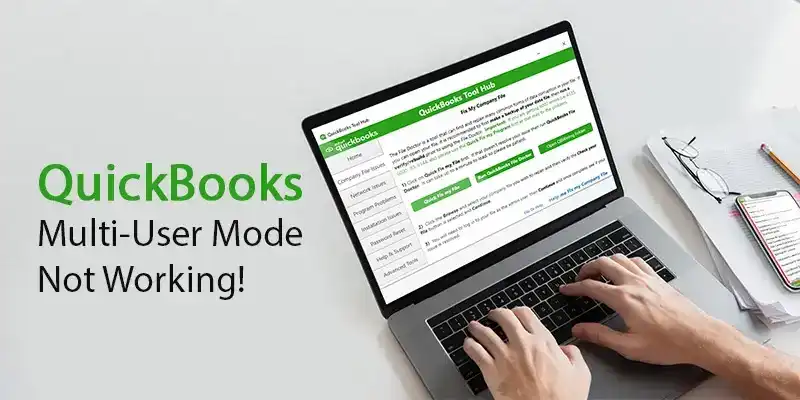
Find and Fix QBWin.log Errors in QuickBooks Desktop 2025
When the tax season is rumbling right around the corner with its hefty workload, the last thing that anyone would want would be a glitch in the system, an error in their most reliable software. Well, you can take a good exhale of assurance as you have come to the right place. Let us guide you for the steps and procedures on how to solve QBWin.log errors in QuickBooks Desktop. At Sagenext, we have a plethora of error solving experience as we have been in the QuickBooks cloud hosting industry for about a decade now. So, without any further ado, let’s move on to the error solving process, shall we?
You needn’t worry if you see a message about rebuilding your company file. All you have to do is follow the steps you see on your screen and rebuild your file.
After finishing up, you might face additional error messages about your .log files:
- Verify Master: Duplicate transaction number: Master, Trans, txn#, date, doc#.
- Verify Master: totTrans wrong. Is ### should be ###.
- Verify Master: Next trans number is ### should be ###.
- LVL_ERROR–Error: Verify Names List: Index XXX record XXX.
These messages usually show up if QuickBooks closes unexpectedly after an error, server failure or a power outage. If you are someone who backs up their data regularly, then fixing QBWin.log errors should not be a pain.
What is a QBWin log and Where is QuickBooks error log
QBWin.log, or QuickBooks.log, is a log file that QuickBooks accounting software generates. It contains information about various activities and events within the QuickBooks application. The log file records errors, warnings, and other important information that can help diagnose and troubleshoot issues with QuickBooks.
Steps to Fix QBWin.log Errors in QuickBooks Desktop
Here are a few ways to guide you fix QBWin.log Errors:
Step 1: Update QuickBooks
Start by updating your QuickBooks software to the latest edition so that everything runs smoothly and all bug fixes are taken care of.
After updating QuickBooks to the latest version, move on to the second step.
Step 2: Rebuild your Company File
When you’re faced with the message of rebuilding your company file, all you have to do is follow the onscreen instructions and use the Rebuild Data Utility. This tool will fix all the minor damages that there are to your company files.
After doing this, move on to step 3.
Step 3: Check the rebuild report
After you are done rebuilding your file, follow these easy procedures:
Start by opening QuickBooks and your company file and then press F2 in order to open the product info window.
Having done that, now select Review last Verify / Rebuild.
Now, you have to Review the Verify/Rebuild results, then just select “Expand All” to see if QuickBooks found any errors.
For instance, if you see anyone of these underwritten errors or any error about QBWin.log, then immediately move on to Step 4.
Step 4: Restore a Backup
If you have a recent backup of your company file (QBB), use it to restore your accounts. Now, follow these simple steps to restore your account:
- Go to the File menu in QuickBooks and select Open or Restore Company.
- Now, select Restore a backup copy and then press Next.
- After that, select Local Backup and press Next.
- Now you have to browse your computer for your backup company file. It should look something like this: [Your company name].qbb.
- Having followed that, all you have to do is select a folder to decide where to save your restored company file and then select Open. But please keep this in mind that if you open the backup of your data in the same folder as your existing company file, there are chances that you might end up overwriting your data. To avoid overwriting anything, what you can do is, rename your existing company file or the backup, so the names are unique to each file. Or you can also save the backup in a totally separate folder.
- When you’re ready, just select Save. If you end up seeing any messages about possibly overwriting your data, then just select the option that suits your needs the best. Keep in mind that you don’t overwrite anything unless you know for a fact that you want to.
Now all you have to do is open QuickBooks and your company file. If you still see QBWin.log error messages, or you don’t have a backup, move on to Step 5.
Also read this: Open or Restore an Existing QuickBooks Company File
Step 5: Use the Auto Data Recovery tool
By now if you haven’t been able to tackle the problem of QBWin.log error by following the above steps, then please allow our Data Services team to help you use the Auto Data Recovery to fix your company file. It can even fix those errors that the Rebuild Data Utility tool can’t. Feel free to ring up our QuickBooks support team on +1-801-610-6141 in order to get all of your further queries solved and to get detailed know-how on the Auto Data Recovery tool.
Types of Qbwin.Log: Lvl_error
The QuickBooks log file error indicated that there was a problem with the database. Some of the most common LVL_ERROR errors in the QBWin.log file include the following:
- Data corruption: This error indicates that the QuickBooks company file is corrupt. This can happen for various reasons, such as a power outage, a virus attack, or a hardware failure.
- File permission errors: This error indicates that QuickBooks does not have the correct permissions to access a file or folder. This can happen if a different user owns the file or folder or the file system permissions are set incorrectly.
- Database errors: This error indicates a problem with the QuickBooks database. This can happen for various reasons, such as a corrupted database file, a hardware failure, or a software bug.
How to Find QBWin.log or QuickBooks.log files in QB Desktop/Mac/Wiindow
To find the QBWin.log or QuickBooks.log files, you can follow these steps:
- Open the File Explorer (Windows) or Finder (Mac).
- Navigate to the following location, depending on your operating system and QuickBooks version:
- For QuickBooks Desktop 2022 and later versions:
- Windows: C:\Users\Public\Documents\Intuit\QuickBooks\Company Files\log
- Mac: Macintosh HD > Users > [YourUserName] > Documents > Intuit > QuickBooks > Company Files > log
- For QuickBooks Desktop 2021 and earlier versions:
- Windows: C:\ProgramData\Intuit\QuickBooks\Company Files\log
- Mac: Macintosh HD > Library > Application Support > Intuit > QuickBooks > Company Files > log
- Look for files with names like QBWin.log or QuickBooks.log in the specified folder. These files contain the log information you’re seeking.
Conclusion
To concludee, it is necessary to fix QBWin.log errors in QuickBooks Desktop for maintaining the stability and funcationaly. Hence, by following a the given steps, users can effectively fix these errors and ensure the accurate management of their financial data. However, to resolve QBWin.log errors, QB users should first identify the specific error codes or messages presented in the log file and troubleshoot accordingly.
FAQs
Where is the QuickBooks Error Log?
A QBWin log is a file that QuickBooks Desktop creates to log program messages and errors. It includes information created by the Verify, Rebuild, and Condense Data utilities.
The file is located in the following directory:
- For Windows: C:\Program Files (x86)\Intuit\QuickBooks\<version>\Logs
- For Mac: /Users/<username>/Library/Application Support/Intuit/QuickBooks/<version>/Logs
The file name is QBWin.log. Every time you start QuickBooks, it renames the old QBWin.log file and creates a new one. You can use the QBWin log to troubleshoot problems with QuickBooks. For example, if you are having trouble opening a company file, you can look for errors in the QBWin log to help you identify the cause of the problem.






